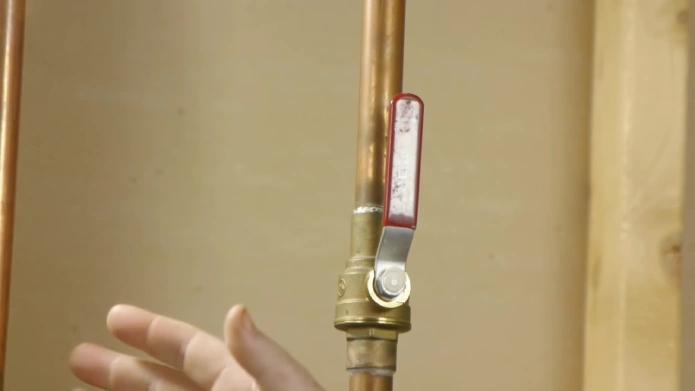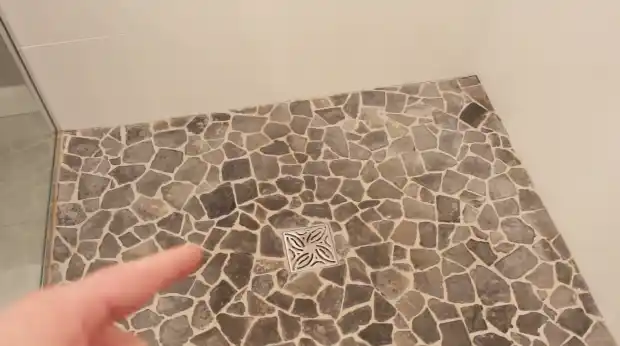Last Updated on July 16, 2023
Is your sump pump pit feeling thirsty? If you’ve noticed it’s dry, you’re likely wondering what’s causing the issue and how to fix it. A sump pump pit is crucial for diverting water away from your home, but if the pump isn’t working correctly or there’s an obstruction in the flow, it could leave the pit high and dry.
With a broad range of underlying causes, from installation difficulties to naturally occurring conditions like low water tables and backed-up discharge pipes, the threat posed by non-functioning sump pumps can be unsettling.
A well-maintained system protects your home from flooding or costly damage caused by excess moisture. That’s why it’s crucial to identify the causes of your dry sump pump pit and immediately fix the issue.
Here, we’ll discuss some of the most frequent causes of a dry sump pump pit so you can better understand why it’s happening and what you can do about it.
Why Is My Sump Pump Pit Dry: Possible Reasons
A sump pump pit is an integral part of a home’s plumbing system, as it helps to divert excess water away from your house and prevent flooding. Unfortunately, the sump pump pit can become dry and ineffective if it isn’t maintained properly.
Several common causes and their solutions for a dried-out sump pump pit include:
01. Inadequate Installation or Sizing

If your sump pump pit is not installed correctly or is improperly sized, it could be why it is dry. An inadequate installation can occur if the pit isn’t dug deep enough, which could cause water to flow away from the pit instead of into it.
Also, if the sump pump pit is not located in a spot that meets local building codes or has the slope required for proper operation, then this could also be a factor in why it may remain dry.
Aside from that, if the size of the sump pump pit was not constructed to meet the needs of your home and its water drainage needs, this may also be a contributing factor to why your sump pump pit may remain dry.
Solutions for bad installation and sizing include ensuring that local building codes are followed when installing the pit and digging deep enough. Also, pits should be constructed with enough volume to meet the needs of the home and its water drainage requirements.
02. Lack of Precipitation
Another reason your sump pump pit may be dry is that there hasn’t been enough precipitation in your area recently. Sump pumps rely on a steady flow of rainwater or groundwater entering them to operate correctly. So if there isn’t sufficient rain or snow in your region, then they won’t be able to function fully.
Also, if your local weather patterns involve long periods of dryness followed by short bouts of intense precipitation, this could cause flooding before your sump pump has had time to kick in.
To prevent this, homeowners should consider installing rainwater collection systems such as cisterns or tanks. This will help ensure adequate water is stored for moments when conditions become too wet for the sump pump alone.
Also, homeowners should check their local weather forecasts regularly and take steps ahead of time to prepare for heavy rainfall or snowfall events.
03: Low Water Table
In certain cases, the local water table may pose a problem for sump pumps. When the water table is too low, the pit may not remain consistently wet, which can lead to a malfunctioning sump pump.
This issue is particularly prevalent in areas that have experienced droughts or other harsh weather conditions that have depleted underground water supplies.
Moreover, if nearby wells or other extraction sources are drawing more water than what is being replenished by precipitation or other sources, the pit may dry up over time. Such occurrences further emphasize the importance of proper maintenance and monitoring for sump pump usage.
Solutions for this issue can include implementing measures that reduce groundwater extraction in your area and increasing infiltration into aquifers through soil conservation and rainwater harvesting practices.
Also, homeowners can install risers on their sump pumps to draw deeper from the ground if necessary.
04: Clogged or Frozen Discharge Pipe

The discharge pipe sends water out of your home and away from your foundation. If the pipe gets clogged with debris like dirt, leaves and other materials, there may not be enough space for water to flow through it properly and escape from your home.
Also, suppose temperatures drop significantly during winter months. This can also cause issues with a frozen discharge pipe, preventing water from flowing in and out of the sump pump correctly. Both these issues can trap water in your sump pump pit, causing it to stay dry.
To solve this problem, regularly inspect and clean your pipes and ensure they are free of any obstructions. Also, if you experience freezing temperatures in your area, you should consider insulating your pipes to keep them from freezing over and blocking water flow.
05: Over-Reliance on Sump Pump Pit
Excessive use of a sump pump can also lead its pit to dry over time. When too much water is being pumped out of the ground and not adequately replaced by incoming flooding, rainwater, or other sources, there may simply not be enough groundwater entering into the pit to remain consistently full and operational at all times.
As such, those who rely heavily on their sump pumps should monitor their usage and ensure that they are not pumping out more than what can reasonably return into their pits for them to remain wet and operational as needed throughout all seasons and weather patterns.
To solve this problem, checking whether your sump pump is working efficiently and replacing the groundwater as quickly as possible is vital.
Secondly, find that there is not enough groundwater entering the pit. You should consider installing an external water source, such as a well or rainwater collection system.
Last but not least, it might be worth investing in a backup sump pump if your primary one fails unexpectedly, resulting in insufficient water pumping into the pit.
What does it Mean When a Sump Pump Runs Dry?
When a sump pump runs dry, this condition is known as “Dry Running,” and it affects most types of pumps. When this happens, the internal machinery of the pump, such as impellers, lobes, gears, casings and seals, can be damaged due to a lack of lubrication caused by insufficient fluids.
Also, this could lead to cavitation, which could further damage parts inside the pump. Keeping an eye on your sump pump’s pit is crucial to avoid dry running and potential damage to its internal components.
What Happens If a Sump Pump Pit Runs Dry?

When a sump pump pit runs dry, it can cause the pump’s plastic and rubber components to wear out much more quickly than they should. You may need to repair or replace the sump pump sooner than expected.
In the best-case scenario, the pump isn’t needed because there is no flooding issue at all. But, running the sump dry too often can greatly reduce its lifespan and leave your home vulnerable to flooding due to mechanical failure of the pump itself.
Is it normal for a sump pit to be dry?
In a sump pit, it’s not normal to be always dry. The water in the sump should be able to circulate and flow freely so that it can keep up with any incoming groundwater.
If your sump does not have enough water, it won’t be able to effectively move the water away from your house, which could lead to flooding issues within your home.
To prevent this from happening, you should make sure that there is enough water in your sump pit at all times so that it can work properly when needed.
How Much Water Should be Left in the Sump Pit?
The ideal amount of water that should remain in your sump pump pit is around 2 to 3″ inside. This level should help ensure that the pump can effectively move any incoming groundwater away from your property without overflowing or overflowing too quickly when there are heavy rains or floods.
Also, having too much or too little water in the pit can cause problems with the accuracy of readings which could lead to false alarms or failed pumps depending on how low or high they get.
Can You Leave a Sump Pump Running Without Water in a Sump Pump Pit?

You should not let a sump pump run without water in its pit. This is because when there’s no water present, the system will be unable to cool itself during operation and thus overheat more quickly.
An overheating system can result in the motor burning out due to the excessive heat, causing it to fail much sooner than expected. To avoid this issue, ensure your sump pumps are serviced regularly so they don’t run while dry.
Also, check your system periodically for any blockages like mud or debris that might prevent the proper operation of your system.
Troubleshoot Your Dry Sump Pump Pit Issues
Dealing with a dry sump pump pit can be incredibly frustrating, especially when you’re not sure what’s causing the issue. But, understanding the underlying causes of this issue can help you take necessary steps towards correcting the problem.
Inadequate installation or sizing, insufficient rain or snow in the region, a low water table, clogged or frozen discharge pipes, and overreliance on the sump pump pit are all potential issues that could lead to a dry pit.
But if you have tried all of the standard measures and still can’t seem to get your pit up and running, then don’t despair. There may be a deeper issue at play that requires professional assistance.
Contact an experienced technician with the know-how and expertise necessary for resolving any underlying problems with your system so it will maintain peak performance year after year.



